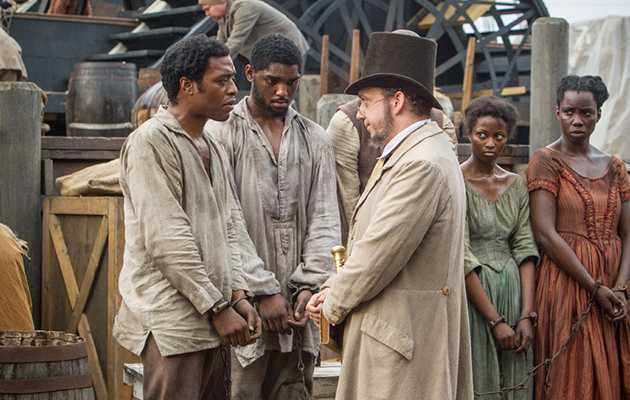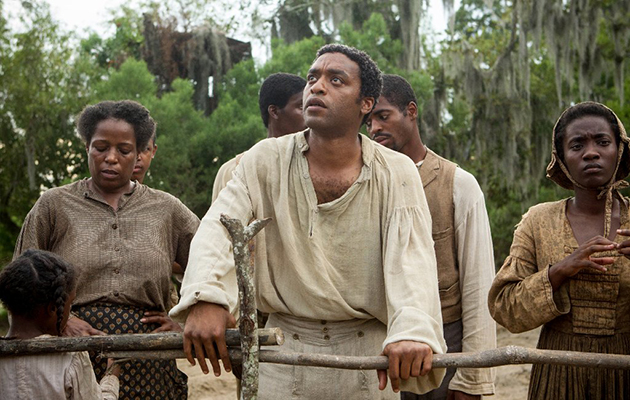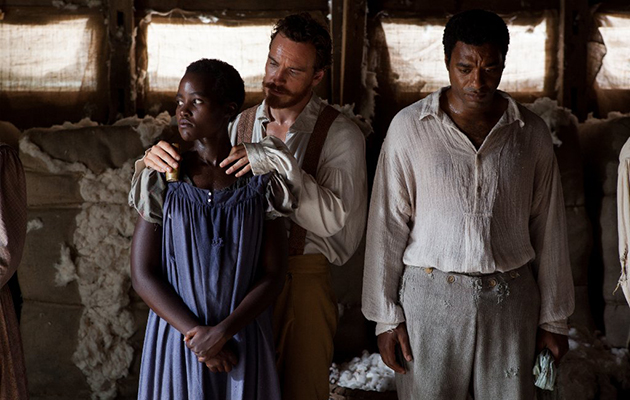Graphic
‘12 Years a Slave’: Steve McQueen, Chiwetel Ejiofor on key scenes
For two-plus hours, “12 Years a Slave” asks moviegoers to immerse themselves in the true story of Solomon Northup, a free black man drugged and sold into slavery in 1841. It’s a harrowing journey to hell and back, full of both unspeakable cruelty and spiritual transcendence.
We spoke recently with the film’s director, Steve McQueen, and actor Chiwetel Ejiofor, who plays Northup, asking their thoughts on three key scenes from the movie. Here are excerpts from the conversation:
By Glenn Whipp

‘Physical torture and the psychological torture’
‘He’s in a battle for his mind’
‘It was a dangerous thing we were doing’
|
(Jaap Buitendijk / Fox Searchlight) |
|
The scene:
Shortly after beating plantation overseer Tibeats in a dispute, Solomon is strung up and left to hang on a tree, his boots barely touching the mud, giving him just enough space to avoid choking to death. He hangs there for hours while, in the background, children play and the other slaves go about their chores. |
|
McQueen:
There’s two things going on simultaneously — the physical torture and the psychological torture. If anyone touches Solomon, they know they’ll be strung up next to him. So they have to get on with their daily life. It becomes the norm. Slavery was such a thing that on any given day, you didn’t know what might happen to you. You might be lynched, you might be whipped, you might be asked to wake up at 4 in the morning and dance. This shot acts as a visual reference to people having to block out things and continue in order to survive. |
|
Ejiofor:
It’s a dance. It says everything about Solomon’s character. That instinct of survival is one thing, but that changes here and becomes an act of defiance. Surviving with his mind intact, that’s what the scene is all about. |
|
McQueen:
We varied the length of the shot. It’s all about going just before the breaking point, so the audience is with him in real time, witnessing it. It’s not a stylistic thing. It’s about being there and being present as he’s hanging. |
|
Ejiofor:
That scene connected me to Solomon’s experience in a way that was invaluable. Getting so close to what this person experienced deepened my own sense of being allowed to tell his story. That’s why I found that day to be very enriching and a privilege. |
|
(Jaap Buitendijk / Fox Searchlight) |
|
The scene:
The slaves bury one of their own, Uncle Abram, in the cemetery. Standing over the grave, they begin to sing the spiritual “Roll, Jordan, Roll.” At first, Solomon is conflicted and silent, but he eventually joins in, singing with his whole heart. |
|
McQueen:
That’s the moment where, through singing the spiritual, Solomon finds his voice. He belongs to that community in a way he has never belonged before. We’re in this together. There’s a power in that. He’s overcome by the emotion of it. |
|
Ejiofor:
It always struck me that, like so much of Solomon, the singing came out of a reflex. It’s not considered. At this point, he’s not in a battle for his freedom. He’s in a battle for his mind. And his survival instinct is so strong, he realizes there’s support around him that he has never seen. He hasn’t abandoned hope, but he has to allow for the possibility that he’s not going home. How is he going to deal with that and still keep his mind alive and his body on the planet? Community. |
|
McQueen:
When the camera holds on Chiwetel, we see Solomon at his lowest, lowest ebb. But at the same time, we see his highest, highest hope. It’s in one shot. From the depths up to the clouds. That’s why that scene is so powerful. It transforms from despair into courage. |
|
Ejiofor:
If anything tells you about the human spirit, it’s that scene. That’s why we’re still here today. |
|
(Francois Duhamel / Fox Searchlight) |
|
The scene:
Slave Patsey returns after leaving the plantation to get some soap. Plantation owner Epps wants her whipped as punishment but can’t do it himself, so he orders Solomon to do it instead. The scene is presented as a continuous shot lasting nearly five minutes. |
|
McQueen:
I wanted it to feel like a pressure cooker. Again, I felt the audience needed to witness this, so I wanted to keep the scene at a high, focused level. If I put a cut in there, it would let people off the hook. The air would come out of the pressure cooker. That’s why I wanted it in real time. |
|
Ejiofor:
We rehearsed for a few days. There was a lot to get technically right, not least, the distance between the end of the lash and Patsey. We had to find that choreography and then just let it go and play the scene. That sequence shows what a remarkable [director of photography] Sean Bobbitt is, the way he captures every detail. |
|
McQueen:
It was a dangerous thing we were doing, emotionally as well as physically. There was a buzz in the air as well as an exhilaration moment when we finished. |
|
Ejiofor:
In his book, Solomon has such humility and understatement, but with this, he says what he felt. He didn’t believe there could be in the entire planet a darker day than that day. |







